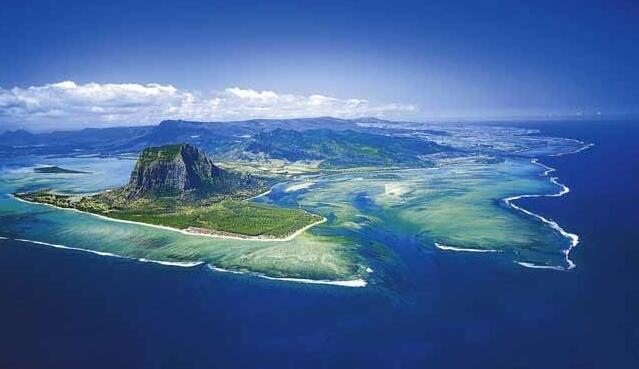Mauritius is a volcanic island and is surrounded by a coral reef. In a wreath within the coast, rugged mountain peaks stand as remnants of older volcanism, while the dome-shaped central part consists of basaltic layers from the Tertiary and Quaternary times. The highest peaks are Piton de la Petite Rivière Noire (828 meters) in the southwest, and Piéter Both (820 meters) within Port Louis in the north.
Climate in Mauritius
Mauritius has a subtropical, maritime climate, dominated by the southeastern pass and the equatorial rain belt, which in January – February is farthest south of the equator. In the islands of Mauritius and Rodrigues, July and August have the lowest average temperature of 21–22 ° C, the highest average of January and February of 26–27 ° C. It rains throughout the year, at least in September – October, most in March – April. The annual rainfall is mostly 1000–3000 mm, mostly in high altitudes to the southeast, at least in the rain shadows in the northwest.
On the islands closer to the equator, the average temperature is 25–27 ° C with little annual variation, but warmest in March – April. Most precipitation in January, at least in June / July. Tropical storms, which occur most frequently in January – March, can cause major destruction year after year.
Plant and wildlife in Mauritius
The original vegetation has been removed and the lower areas are mostly cultivated, higher areas have scrub and grass vegetation.
Wildlife is now characterized by introduced species, while the original species is largely extinct. Bats are the only native mammals; sambar deer, mungo, etc. has been introduced. The reptile fauna includes turtles, four snake species (non-toxic) and 15 lizard species. Amphibians and freshwater fish are missing. Many bird species have become rare (eg Mauritius tower falcon) since Europeans arrived, some are extinct. Two large pigeons that could not fly, the queen (Mauritius) and the rodrigue queen (the solitaire), died in the 17th century. Many seabirds such as tropical birds, soles, frigates and terns nest. At least 15 introduced bird species have been established, including: house crows, shepherds, gray sparrow and the ubiquitous red-eared thunderbolt. More than 430 species of fish are recorded in the waters around the islands.
Geography and environment
The islands of Mauritius and Rodrigues are volcanic and surrounded by a coral reef ; the other 23 islands are coral islands or reefs. The island of Mauritius has flat lowlands along the coast, this is the widest in the north and east. The central plateau on the island’s interior is 300-500 meters above sea level with Piton de la Petite Rivière Noir, 828 meters above sea level, as the highest point. The second largest island is Rodrigues, 108 square miles, 560 kilometers east of Mauritius.
About 58 percent of Mauritius is cultivated while 31 percent is forested. There are many watercourses, many in cracks formed by lava flows.
Mauritius’ exclusive zone covers about 2.3 million square kilometers of the Indian Ocean.
The climate is subtropical maritime. There are two seasons: a hot and humid summer from November to April with an average temperature of 24.7 o C and a relatively dry and cool winter from June to September with an average temperature of 20.4 o C. The central plateau is much cooler than the surrounding coastal areas and can have twice as much rainfall. The annual rainfall varies from about 890 millimeters on the coast to about 5080 millimeters in higher altitudes. Tropical storms wreak havoc some years.
Mauritius has some of the world’s rarest plants and animals, but much of its native vegetation has been removed and many native species have been eradicated; best known of these were the flightless birds drone and rodrigues drone (solitary) that died out in the 17th century.
Bats and whales are the only native mammals. Other widespread mammals have introduced mungo and sambar deer. Introduced rats, pigs and monkeys ate dronte eggs in nests on the ground. Several bird species, including Mauritius tower falcon, have become rare since Europeans arrived. A number of seabird species breed, and there are several introduced bird species, including gray sparrow and red-eared bulbul.
There are several turtles, 15 lizard species and 4 non-toxic snakes. There are 59 species of freshwater fish. The coastal waters have a large number of fish species.

